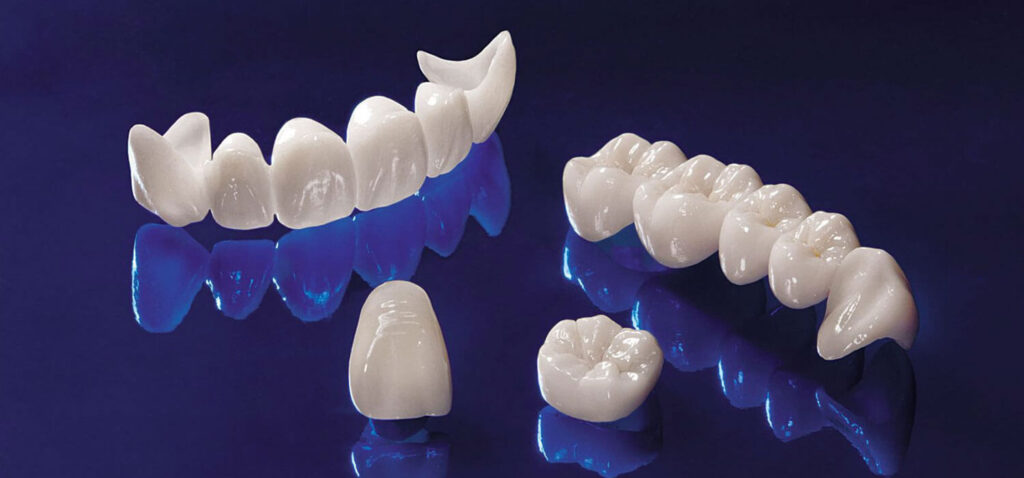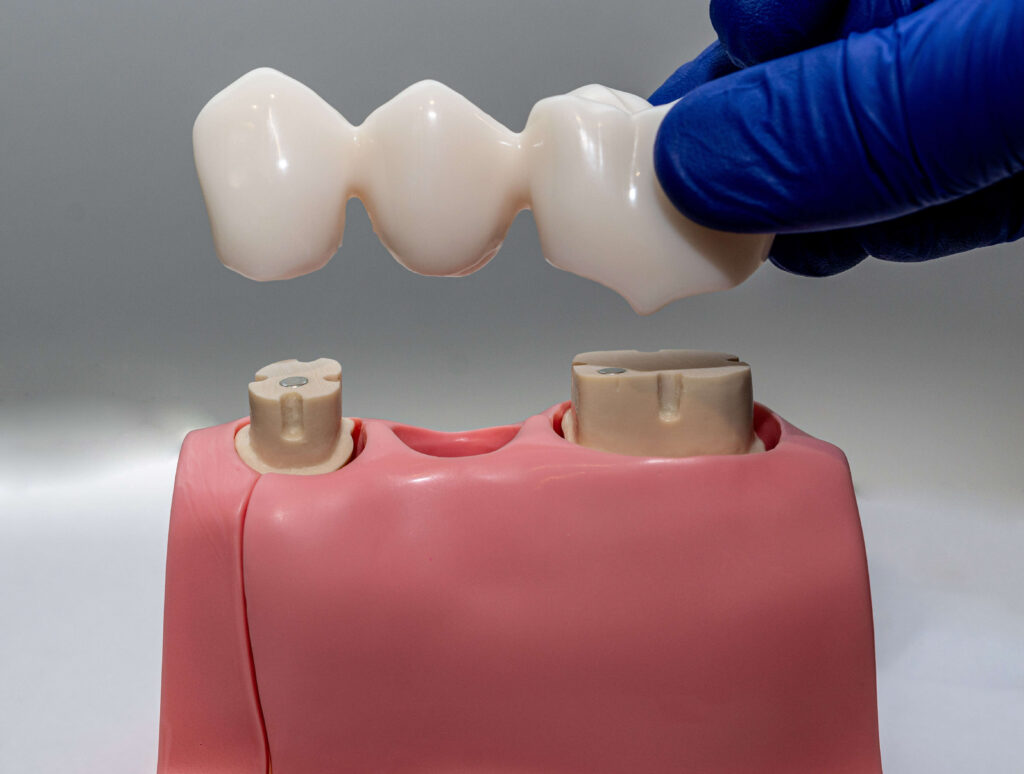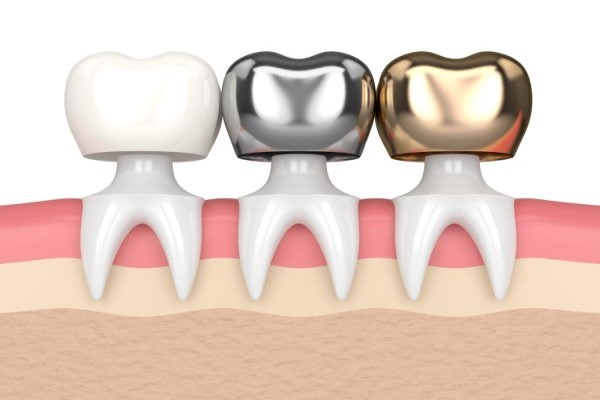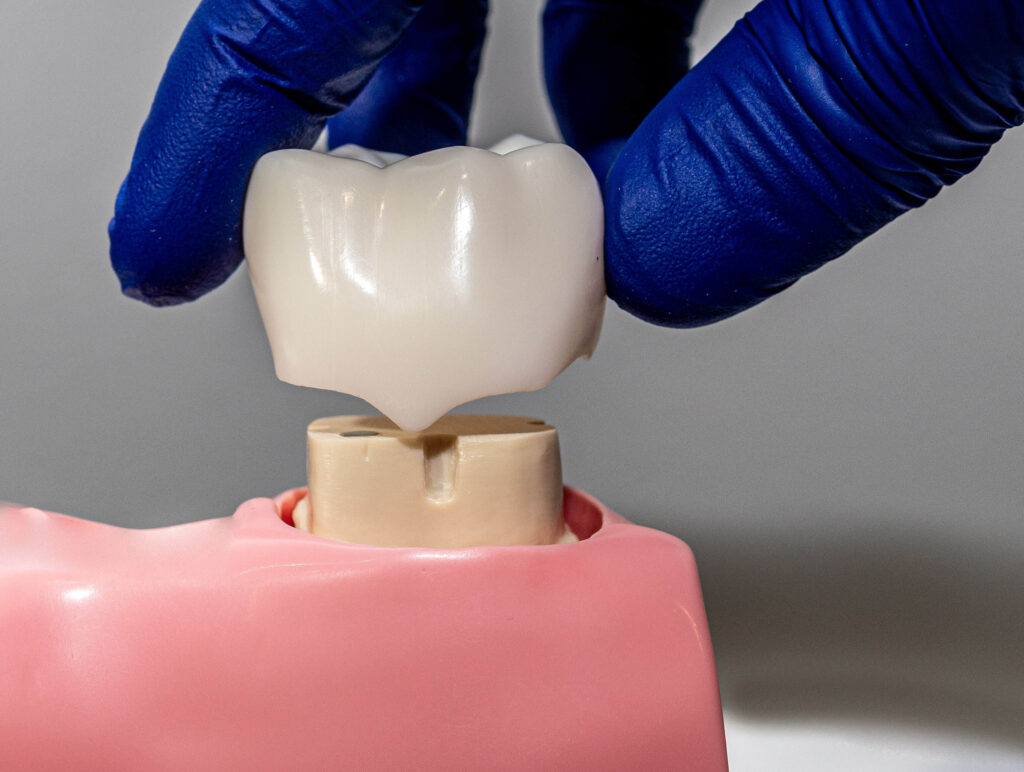Dental Crowns
Dental crowns (tooth crowns) are artificially made caps for teeth that have been severely damaged, either by significant tooth decay, trauma or have had root canal therapy (RCT). These replacement caps are artificially made out of common dental materials such as stainless steel, gold or ceramics. The material is formed and shaped to appear as a natural tooth.Dental Crown Fast Facts
- Golden dental crowns have been used for about 4,000 years!
- Porcelain wasn’t used as a material until 1903.
- Metal wasn’t used as a base until the 1990’s.
What are dental crowns?
The crown of a tooth is the top of the tooth that is covered by enamel. This is a very important part of the tooth since almost all of the chewing happens on the crown. If the crown of the tooth is damaged by either breaking, tooth decay, or other ailments, then it needs to be fixed right away or else it can be very painful to the one experiencing it.
Dental crowns can be tooth-colored, gold, silver, or metal caps. These caps will fit over the affected tooth and different materials may be used depending on the tooth they are fitting the cap on. The most common purpose for a crown is to protect a root canal or other dental appliances that may have been used.
Dental crowns are custom-made by technicians to blend in with the surrounding teeth as best as possible.
Here are the factors used to determine the type of material the crown:
- Tooth location & function
- Gum tissue and gum line location
- Visibility of the tooth
- The coloration of the surrounding teeth
- Any possible bruxism (teeth grinding)
When do you need a dental crown?
- Week teeth – Usually caused by significant decay.
- Fractured teeth – Crowns are used to hold broken teeth together.
- Excessively worn down teeth – When a tooth has been worn down due to grinding, decay, or dental erosion.
- Larger-than-normal fillings – A large filling may compromise a tooth. Crowns will help to hold it together.
- Excessive discoloration or staining – If a tooth has significant discoloration, a crown may be needed for cosmetic enhancements.

Crowns are also used to protect dental implants that are vulnerable, typically, they will be used to protect, root canals, dental bridges, and dental implants.
Root Canal treatment
- Root canal procedure – During the procedure, an opening will be created on top of the tooth, the dentist will then carefully remove all of the pulp using specialized instruments. The end result of this procedure will leave an opening in the tooth.
- Role of the dental crown – Since the root canal will always leave an opening, a cap will be needed to cover it. This is the reason the dental crown will be used afterwards.
Dental Bridges
Dental bridges are used when multiple teeth are missing, or significantly decayed. Bridges are at least 3 fake teeth held together by dental crowns.
- Dental bridge procedure – Traditional bridges will be at least 1 fake tooth (pontic), held together with crowns between the abutment teeth. These are teeth that will be fitted onto the existing teeth, while the pontic closes the gap.
- Role of the dental crown – The crown is used to cement the pontic(s) together while securing them to the abutment teeth.

Pros & Cons Of Dental Crowns
Pros
-
Natural looking
-
Enhances your smile
-
Fixes severely decayed teeth
-
Protect dental implants
-
Replace worn out fillings
-
Easy on your budget
-
Simple and painless
-
Variations for different situations
-
Can last up to 30 years
-
Very durable
Cons
-
Part of the tooth must be removed
-
May need replacement
-
Fracture is a possibility
-
Possible increase in tooth sensitivity
How many dental crowns are there?
Porcelain-fused-to-metal-crowns
metal & gold Crowns
Cosmetic Crowns (ceramic)
Ceramic crowns are made entirely of porcelain. These crowns are typically used for the most visible teeth since they are more likely to match the appearance of your teeth. The front (anterior) teeth will most-likely have porcelain crowns. The front teeth are usually not used for chewing, so the crown will not have to be nearly as durable.
All-Resin Crowns
All-resin crowns do not cost as much as their metal and porcelain counterparts. They are cheaper, but significantly less durable, which makes them prone to shorter lifespans and fractures. Typically, they are used on baby teeth only due to their short-term nature, and lack of durability.
Stainless Steel Crowns (SSCs)

Recovery From a Dental Crown Procedure
If the symptoms last longer than a couple weeks, you should call your dentist.
Dental Crown Aftercare
- Avoid sticky chewy foods – Crowns are cemented in place, but they can come loose.
- Avoid hard foods – Depending on the crown, it may be susceptible to breaking.
- If you have a temporary crown, you should avoid using it to chew altogether.

Complications of dental crowns
- An allergic reaction
- Sensitivity or discomfort
- Poorly-fitted crown
- Nerve issues
How much do crowns cost?
To find out a more specific estimate on the types of crowns that will work for you, please call Smiles Dental Group at (587) 409-2959.
Generally, dental crowns are covered by insurance, either totally or partially, but check with your provider first.
There is no “best material”, different materials are used for different situations. Your dentist will advise you on the best option.
Not really, just don’t eat too much hard, and or sticky food. If you do, try to chew on teeth that don’t have crowns.
You could potentially use a porcelain onlay, this only covers part of the tooth and is not as functional or as protective as a crown.
A local anesthetic will be used before your procedure, minimal pain and discomfort should be expected. You may be more sensitive afterward so stay from potentially hazardous foods.
